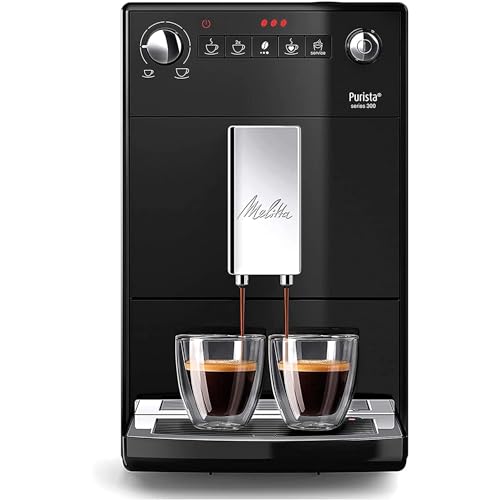How Does Machine Espresso Work?
Machine espresso employs precise pressure and amazing filter technology to make the perfect cup of coffee. How does it work exactly?
In order to make espresso, hot water is forced under high pressure through finely ground coffee. The process is similar to making drip coffee. However it is the pressure that makes the main difference.
The Head of the Group
The group head is the portafilter that you insert when brewing espresso. It disperses water in the portafilter, and regulates the pressure during the extraction. There are a variety of group heads each with its own advantages and disadvantages. Some are focused on temperature stability, while others on pre-infusion options, and others are designed to control the lever. Some are a combination, such as the E61. This is a popular choice among baristas since it provides multiple advantages in a single package.
As you can see in the above photo The group head features several notches to place your portafilter and then twist it manually to lock it in. There is also a rubber gasket that is a part of the notches and helps to create a seal when you insert your portafilter into the machine. The notches on the head permit an exact positioning of the portafilter which is vital to ensure an even extraction.
Apart from allowing you easily place your portafilter in, the group head is responsible to maintain an even temperature. This is achieved by cycling hot water around the portafilter, and through the brew-basket, making sure that the temperature is constant to extract the coffee. It is important to note that even a slight differences can make the distinction between a good and great espresso.
The Pump
The motorized pumps in espresso machines that rotate provide the nine atmospheric bar pressure required to extract espresso. This differs from manual piston machines that use a lever. The pressure is created by pumping water through a heat exchanger and then through the ground coffee.
Pumps tend to be more affordable and last longer than piston-driven machines. However, both types of machines are susceptible to degrading because of frequent use and insufficient cleaning. Pumps are also more complex mechanically, which can raise the cost of even the simplest models.
Some espresso machines use steam pressure instead of a pump to brew espresso. The drawback is that the same boiler that produces steam also increases the temperature of the water to the point of boiling and can result in excessive extraction. They also have to constantly rebuild their pressure in between cups. This requires energy and time.
Many espresso machines make use of an rotary or a vibration pump. A vibration model utilizes the vibrating disk to create pressure, while the circular model pushes hot liquid through the ground at high speed. Both models can make a great espresso, however the rotary pumps are quieter, and more durable than vibration pumps.
The Boiler
The boiler is the element which heats the water to the optimal temperature to extract. The resulting steam is then transferred to the portafilter which holds the ground espresso coffee and is then pumped into the cup. The steam generates enough pressure to push the grounds of the coffee through. This results in a layer of crema on top. This is one of the main characteristics of a great espresso.
There are three different types of espresso machines, each having different pumps and brew temperature. There are a variety of ways that the brew can be controlled as well as the dimensions of the cup the machine can produce.
The first espresso machines were steam types. They utilized only one boiler to make both steam and brew however the pressure they were able to produce was not very high - two bars of atmospheric pressure at the most. This led to the coffee tasting bitter and burnt. This is the reason why Milanese manufacturers Luigi Bezzerra and Desiderio Pavoni invented the modern espresso machine.
The most popular espresso machine is a semiautomatic that has an electric pump. When people think of espresso machines, they envision these machines. With a semi-automatic machine, you have to grind the beans and tamp them by hand. The pump is able to regulate the flow of water and pressure. This is a fantastic compromise between human control and mechanised accuracy.
The Filter
Espresso machines usually use filters that separate the grounds of coffee from hot water. espresso machines for home is also a crucial component of the temperature control system as it keeps the machine from overheating.

It also aids in flavor, as a filter allows for a longer bloom phase. This allows the beans to let their nuances out and provides an opportunity for better extraction.
It is important to keep in mind that even the best filter can produce a bad cup of coffee. The quality of the beans, and the extraction, are still very important.
This is where the magic happens, it's what makes espresso taste great. The grouphead, also referred to as the brewhead, is where the portafilter (the thing you put the ground coffee in) sits when you're making espresso.
In a steam-driven espresso machine, hot water is heated in an airtight container to create steam. This is then pushed through the grounds under high pressure. These kinds of machines are usually less expensive and simpler to maintain than pump-driven models. They are however limited for creating the ideal conditions for brewing as they only operate with 1-1.5 bar of pressure. The perfect shot requires 9-10 bars.
In recent years, compressed air-driven espresso machines have been gaining popularity. They utilize an air compressor to push hot water through the grounds and are significantly more portable than electric steam-driven machines.
